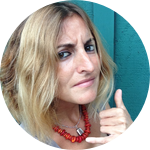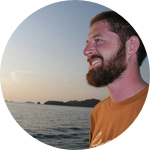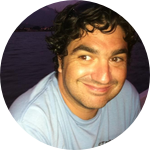Project Results
Our new paper in STOTEN... ¡¡Oléeeee!!!
Highlights
- Unprecedented heatwaves in 2014–2015 caused massive coral bleaching in Hawai‘i.
- Two species had resistant/susceptible colonies, a third one was fully susceptible.
- Microbial dynamics were tracked with multigene markers and compositional analyses.
- Microbiomes were shaped by host-species, algal profiles by bleaching resistance.
- A taxa consortium orchestrated coral microbiomes bleaching recovery in all hosts.
Historically, Hawai‘i had few massive coral bleaching events, until two consecutive heatwaves in 2014–2015. Consequent mortality and thermal stress were observed in Kāne‘ohe Bay (O‘ahu). The two most dominant local species exhibited a phenotypic dichotomy of either bleaching resistance or susceptibility (Montipora capitata and Porites compressa), while the third predominant species (Pocillopora acuta) was broadly susceptible to bleaching. In order to survey shifts in coral microbiomes during bleaching and recovery, 50 colonies were tagged and periodically monitored. Metabarcoding of three genetic markers (16S rRNA gene ITS1 and ITS2) followed by compositional approaches for community structure analysis, differential abundance and correlations for longitudinal data were used to temporally compare Bacteria/Archaea, Fungi and Symbiodiniaceae dynamics. P. compressa corals recovered faster than P. acuta and Montipora capitata. Prokaryotic and algal communities were majorly shaped by host species, and had no apparent pattern of temporal acclimatization. Symbiodiniaceae signatures were identified at the colony scale, and were often related to bleaching susceptibility. Bacterial compositions were practically constant between bleaching phenotypes, and more diverse in P. acuta and M. capitata. P. compressa's prokaryotic community was dominated by a single bacterium. Compositional approaches (via microbial balances) allowed the identification of fine-scale differences in the abundance of a consortium of microbes, driving changes by bleaching susceptibility and time across all hosts. The three major coral reef founder-species in Kāne‘ohe Bay revealed different phenotypic and microbiome responses after 2014–2015 heatwaves. It is difficult to forecast, a more successful strategy towards future scenarios of global warming. Differentially abundant microbial taxa across time and/or bleaching susceptibility were broadly shared among all hosts, suggesting that locally, the same microbes may modulate stress responses in sympatric coral species. Our study highlights the potential of investigating microbial balances to identify fine-scale microbiome changes, serving as local diagnostic tools of coral reef fitness.
About This Project
Last summer, coral reefs in Hawaii turned white when high ocean temperatures caused corals to lose the microbes that normally give them color. These microbes also provide nutrition and disease-protection to corals, and without them, "bleached" corals often die. However, corals can survive—and even adapt—if their healthy microbes come back. Now, we are tracking coral recovery in Hawaii up close to understand how the fate of these corals, and even the future of coral reefs, may depend on microbes.
Ask the Scientists
Join The DiscussionWhat is the context of this research?
Corals build enormous reefs that support rich marine life and provide people worldwide with coastal protection, food, and income. To do this, corals need symbiotic microalgae and bacteria to provide them food and keep them healthy. When waters get too warm, stressed corals lose these microbes, causing them to turn white (hence the name coral "bleaching"), and often die. However, some bleached corals get their microbes back over time—some may even acquire better-adapted, stress-tolerant microbes—but we don't know what drives this process. Recent severe bleaching of our local reefs gives us an unprecedented opportunity to closely track populations of microbes in individual corals over time to understand how variable recovery rates and long-term survival are mediated at the microbial level.
What is the significance of this project?
The future of coral reefs depends on how corals cope with rapidly warming oceans, which are causing more frequent and severe coral bleaching events worldwide. Bleaching may wipe out some corals entirely, while others may recover and even adapt to changes in their environment. Evidence suggests that adaptation may be mediated by changes in corals' symbiotic microbe communities after bleaching, but the way these microbes interact, change, and repopulate bleached corals are not well understood. By studying the community dynamics of these microbes in bleached corals, we may discover why certain corals recover and others don't, and what drives certain corals to adapt, and others not. This understanding is critical to protecting coral reefs in an era of climate change.
What are the goals of the project?
We have already tagged and sampled 150 coral colonies throughout Kaneohe Bay, O'ahu, at the peak of the bleaching event (late October), and again after 3, 6, 9, and 12 weeks of recovery. Our next step is to sequence DNA to genetically identify and quantify the symbiotic algae and bacteria in each sample. Then, we can compare communities of microbes and trace the rates and patterns of their recovery throughout the Bay, identifying innate and environmental factors that promote recovery. We will continue monitoring these colonies into the future to understand how their microbial symbiont recovery impacts long-term performance and survival. This project will provide a critical baseline to understand how future stress events affect these coral colonies.
Budget
The money raised here will go toward sequencing two DNA regions (16S and ITS-2) from each coral sample to identify and quantify bacteria and microalgae to track patterns of microbial community change over time. Next-generation sequencing is expensive, but it is the only way to comprehensively describe microbial populations. These data will permit the detection of subtle shifts in the microbial communities, which is crucial to explain the microbial participation in coral recovery and adaptation.
We're offering the following reward to our donors:
$100: Adopt a coral in Kaneohe Bay, O'ahu. One of our tagged coral colonies will be named in your honor. You will receive a certificate with information about your coral, and photographic updates as we monitor its recovery.
Meet the Team
Affiliates
Team Bio
Laura Nunez Pons: (left) Biology studies in Spain pushed me right into the water. After a PhD in Antarctica, I left the freezing white for the warm reefs of Hawai'i. Microbes are essential in ecological performance, and this project addresses symbiosis and adaptability. I enjoy dancing, singing, eating, cooking, reading, traveling…all in good company!
Ross Cunning: (right) After growing up in Indiana, I was drawn to study the ocean in North Carolina and Florida, and am now a postdoc in Hawaii. I have learned that coral reef and ocean health affects us all—no matter where we live—and I am passionate about telling this story around the world.
Raphael Ritson-Williams: (bottom) Growing up in California I learned to love the crazy diversity of creatures in the ocean. Scuba diving around the world I realized that coral reefs are critically endangered. I've focused my studies on how corals persist in the modern world and how we can conserve these critical animals for the persistence of coral reefs in the future.
Laura Núñez-Pons
I conducted my PhD at the University of Barcelona, Spain (November 2012) on chemical ecology, defensive metabolites and bioactive natural products from Antarctic sponges, soft corals and ascidians. Part of my Thesis was performed in Italy (Marine Natural Products Lab at ICB-CNR, Pozzuoli, Napoli) and Antarctica (field work), among other locations. After my PhD I decided I wanted to "warm up" and also desired to expand the topic of my research towards the fascinating and complex coral reef ecosystems. I intend to apply molecular biology, microscopy and chemo-analytical tools to study the functional role of microbial symbiosis in holobiont physiology, enviromental adaptations and in ecological interactions in coral reefs. Currently I am working as a Postdoctoral Researcher at the Gates Lab. in the Hawai'i Institute of Marine Biology (HIMB) University of Hawai'i at Manöa.
Ross Cunning
Coral reef biologist at the Hawaii Institute of Marine Biology.
Raphael Ritson-Williams
Ever since I was a child I was fascinated by the ocean. It is a whole different world, full of mysterious creatures that seem very alien to us as land animals. Through curiosity and many many years of school I've become a marine biologists. I've been lucky to Scuba Dive in many different habitats all around the world.
As a marine biologists my personal career goal is to do excellent research that helps us to conserve marine biodiversity. This is a critical time for humans to learn how to live sustainably with the planet instead of exploiting its resources until ecosystems collapse. We are at a critical juncture in our existence as a species on this planet and I hope my science will contribute to the better use and preservation of the natural resources found here.
Additional Information
In October 2014 we found some corals in Hawaii bleached (bleaching causes the coral to look white, like coral #81 in this photo). Bleaching is a loss of symbionts in corals exposed to elevated seawater temperatures, and is a sign of severe stress.
Many corals were found bleached, but some of the corals remained healthy (coral #92 in this photo). It is a great mystery why some corals remained healthy when exposed to the same temperature stress.
Project Backers
- 65Backers
- 107%Funded
- $4,280Total Donations
- $65.85Average Donation




